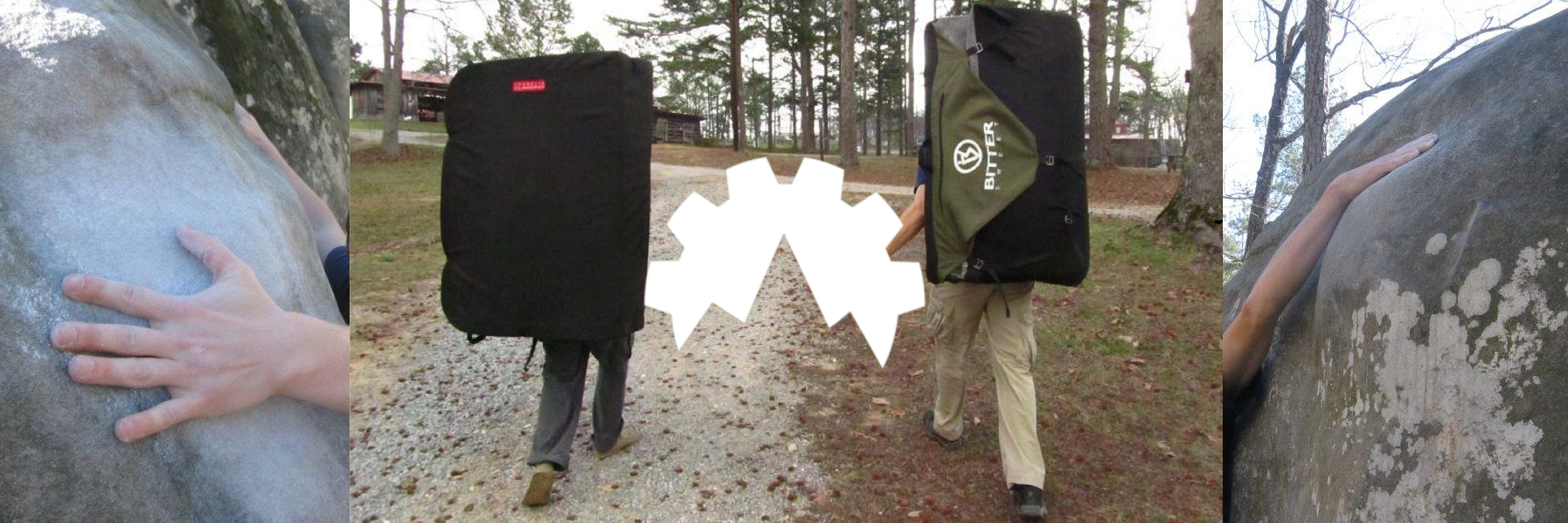You know what Unstucks My Nuts? No Edge Depths at all!
We’ve had a lot of fun this summer, you know, talking about edges, the depths of those edges, and how to hold those edges. Ahhh, good times. Now let’s talk about what is perhaps the next phase of edge training, one that basically brings us all the way back to the very beginning of hangboards. Boards that were made train for an objective, not a ranking in an app. That’s right, it’s time to discuss the Beastmaker.
…*is this bit tracking?*
Deep in the bowels of Sheffield, UK, a couple college kids, Ned Feehally and Dan Varian, that cut their teeth on the infamous gritstone needed a way to train finger strength without damaging their skin. They created their first board in 2007 and perfected it over the next 6 months. They brought on David Bowering and Elsie Butler to help with the CAD CAM and with a custom manufacturing process who were able to work out the kinks for another year. Two more years of tweaking the shape and they were ready to really share their creation with the world. Here is where the magic comes in:
*pause for dramatic tension*
They refused to use a standardized edge depth….
I know, I couldn’t believe it either. The depths are described as “Very Deep,” “Deep,” “Medium,” “Small,” and “Smaller.” They were kind enough to give angles for their slopers, though. The team was working by feel, as in, what felt doable? What felt hard? What felt painful? And perhaps most importantly, what felt comfortable? That is to say, what depths wouldn’t destroy finger skin or apply undo pressure points to the joints and nerves. This was all happening at the same time companies like Lattice were pushing for the rounded 20mm edge as the new “standard” and only way to train. The folks at Beastmaker realized something different. The best way to train is to get on an edge that challenges you AND that it doesn’t matter what the measurement of that edge might be. New to training? Hop on those Deep edges and start the process. Old pro and still looking to be challenged? These edges go Small and Smaller, baby.
This has raised plenty of debate and entire forum threads have been created with people trying to accurately measure the true depths of each hold. You can read them here: Mountain Project, UKC Forums, and Reddit. Of course, half of the climbing population is made up of engineers, just like this blog, and they may not need to know, but they want to know. It’s just how their brain works. Part of why I think the knock-off replicas sell so well, besides the price, is because they list the depths and we have been conditioned that it was a requirement to know before we even pulled on. And yet, if you read the book BEASTMAKING, by Co-founder Ned, (review coming next month) you can get a deeper understanding of why knowing the exact depths isn’t as important as the intuitive feeling of the edges. The rocks don’t tell you how deep they are, but you will absolutely feel it and know how to hold them in the best way possible.
They eventually did get on board with the standardization craze and released the Fingerboard Packers, an easy to pop in and out piece, so that you could create a 20mm depth in the Deep edges. But, they also plainly tell you to use them as you see fit to continue to increase the challenge in any of the four-finger edges where needed. Additionally, they also sell Macros (set of 20mm, 15mm, and 10mm) and Micros (set of 10mm, 8mm, and 6mm) screw on edges to meet the rising demand of standardized coaching/training methods, to which, they also encourage you to flip them upside down for sloping crimp challenge. We could do the math and figure out the true surface contact depth, but I think you guys are over that by now.
The point, to all of this, and why the Part 3 editorial is an Unstucks My Nuts rather than a Jams My Cams, is that the Beastmakers put the power in your hands to try as hard as you wanted to, or needed to, in order to keep progressing. And where has this philosophy landed the boys from Sheffield? Beastmaker is now the top producer of hangboards IN THE WORLD. They make regular holds and other training devices like we discussed above, but their original hangboards and the methods beat the standardized metrics based style of companies like Lattice and Tension. Sure, it is nice to have benchmarks against full spreadsheets of results and try to see where you are or should be in terms of ability, but at what cost? The cost of trying to be the best at hangboarding? The cost of comparing your weighted hang time to a set of data points that may or may not even correlate to actual climbing ability? We, or at least most of us, train to get better at rock climbing, not better at training. When you take away all the minutiae of edge depths and focus on challenging yourself, it gives you the freedom of mind to keep pushing, or, if you’re having a bad day, a way to dial it back a notch. And that’s what Beastmaker did, put your own training destiny in your hands.
Tylor Streett, recommends training tanned, oiled, and shirtless on a diet of homemade pasta for best results.

